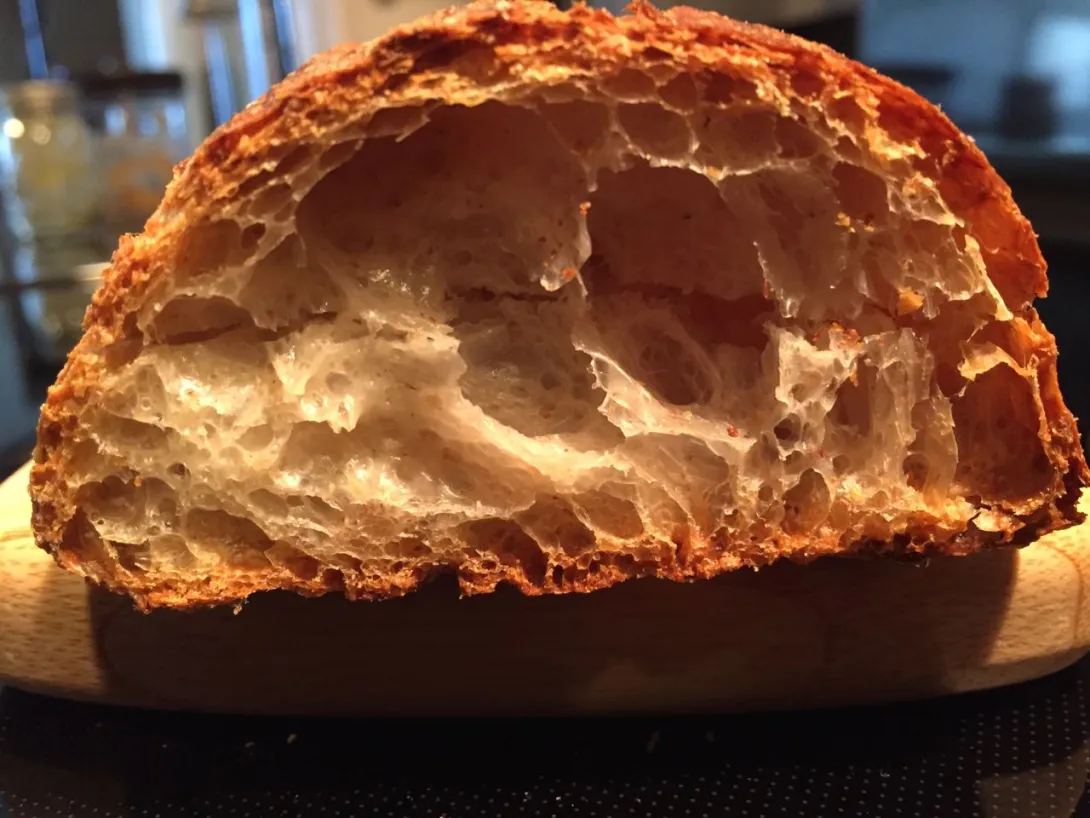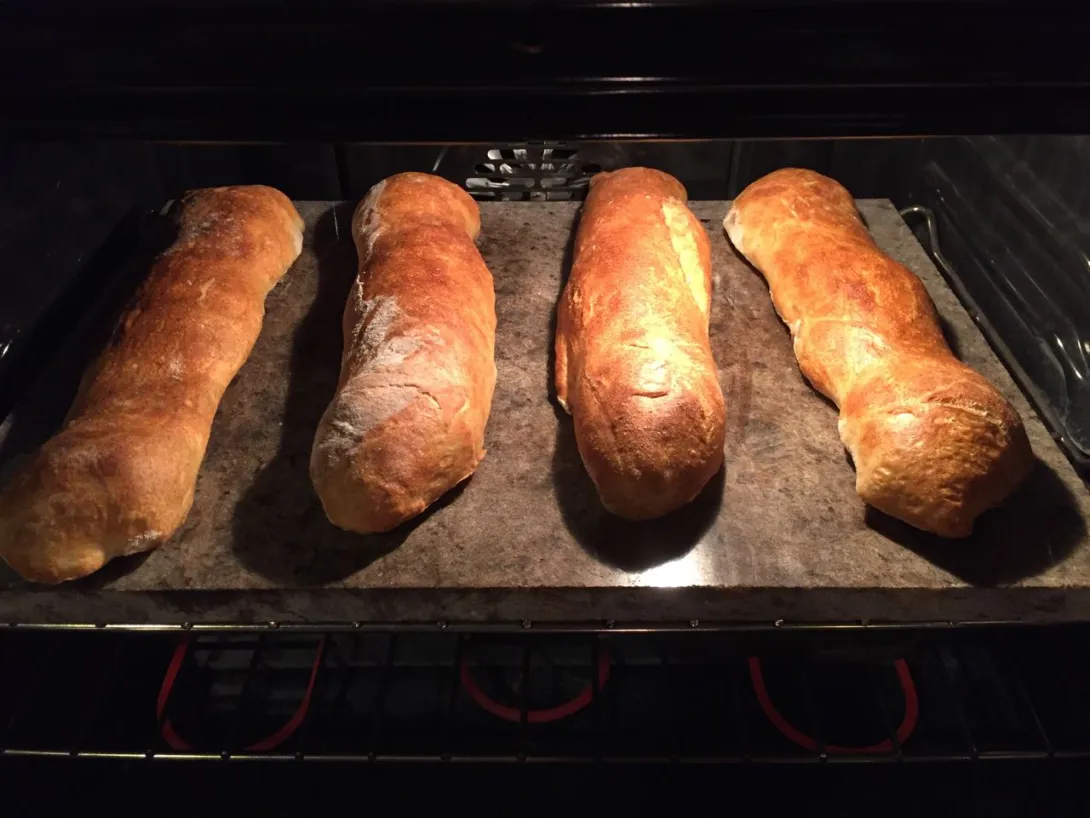alfanso's blog
Scott MeGee's ciabatta, sans olive oil
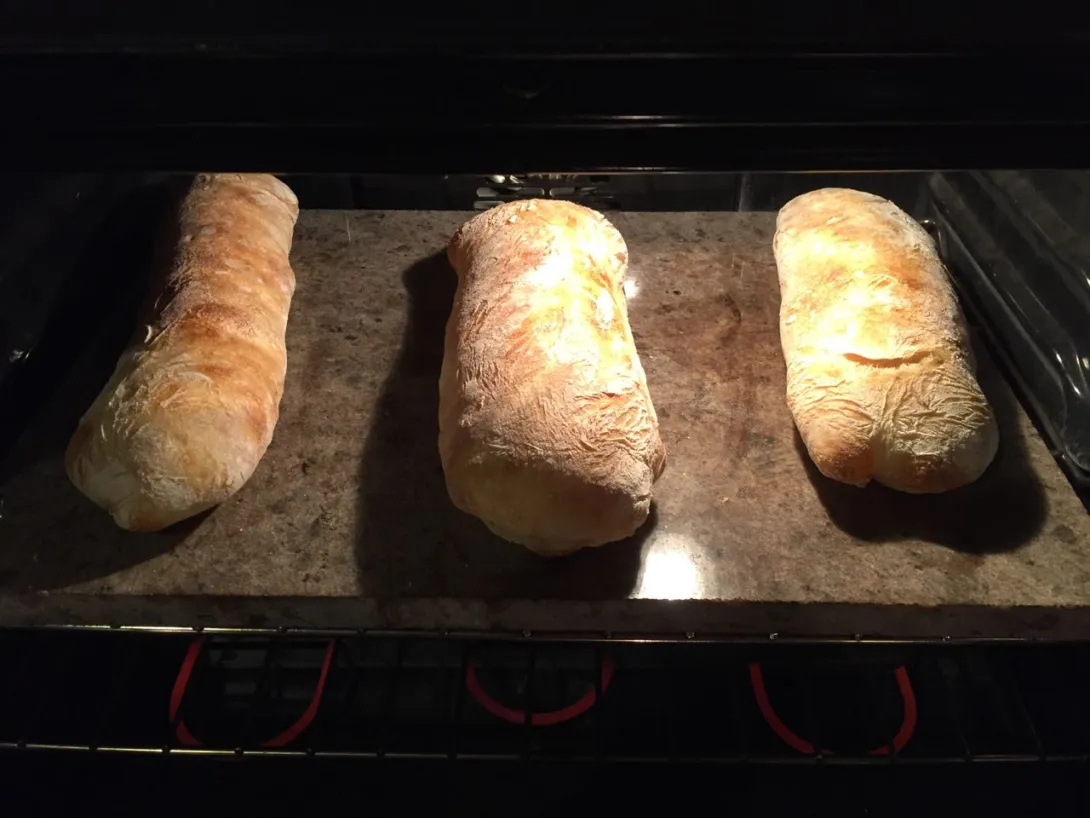
On the levain feeding side of life: My 100% hydration AP levain was last fed on 08 Dec. After two feedings yesterday, 07 Jan, it was quite happy again. Posting these last two sentences to disseminate the knowledge that a well developed 100% AP levain in the back of the refrigerator can sustain a full month, at the least, without being fed, and spring back to life in a pair of feedings.
Our friend, who'd sampled a fair amount of my breads before, was joining us for lunch yesterday. But she'd never had my ciabatta.
Hamelman Pain au Levain with WW, alfanso style
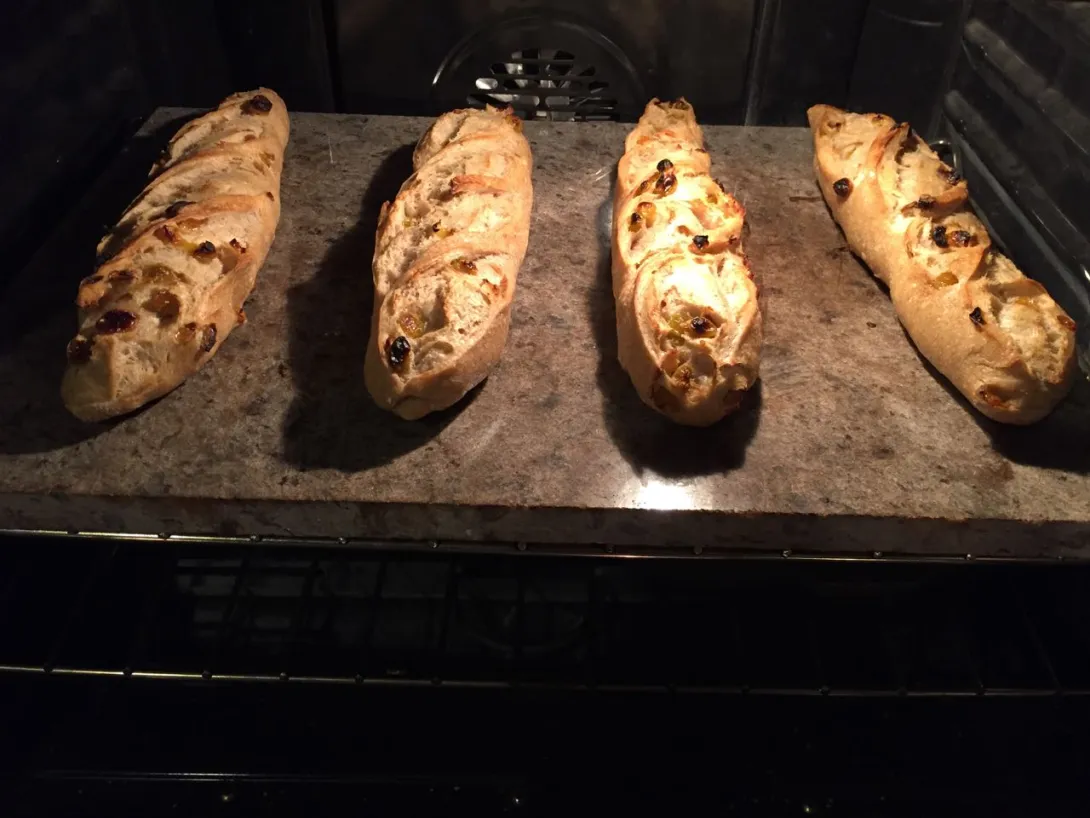
It’s been so long since I made this bread that I forgot how delightful it is. My initial go-to instinct was to build a 125% AP levain and then run a most reliable Hamelman Vermont SD. This, after waltzing with Maurizio’s Cinnamon Raisin SD baguettes and my Sesame Semolina baguettes. Intermixed with learning the tricks of the trade re: croissants, pain au chocolate, pain aux raisins and some cinnamon buns with raisins and walnuts. Still work to be done on all fronts there.
The Laurel and Hardy of semolina breads
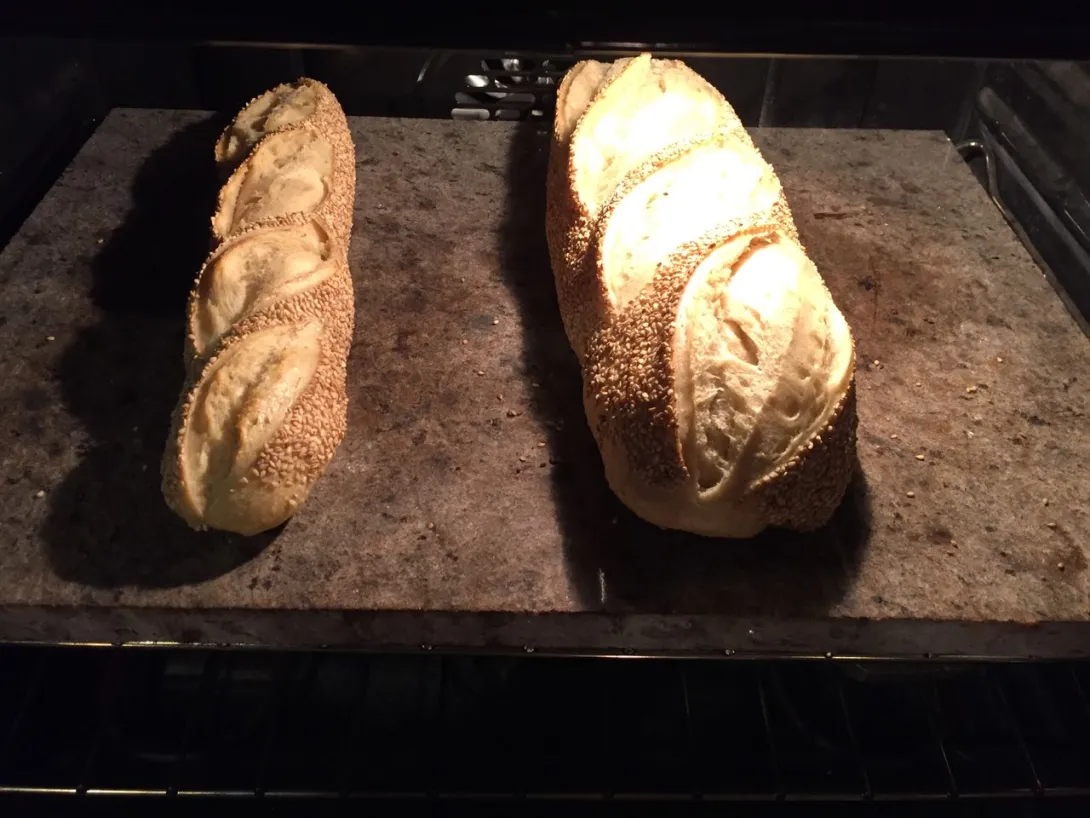
Well, it’s a been a bit of time since posting. Last night I had itchy fingers to go back to a favorite but with a pair of twists. My most-favored sesame semolina based on Mr. Hamelman’s 125% hydration AP flour version. However this time I subbed out the levain for my old favorite 75% mixed flour levain.
Abel's Catalan Peasant Bread
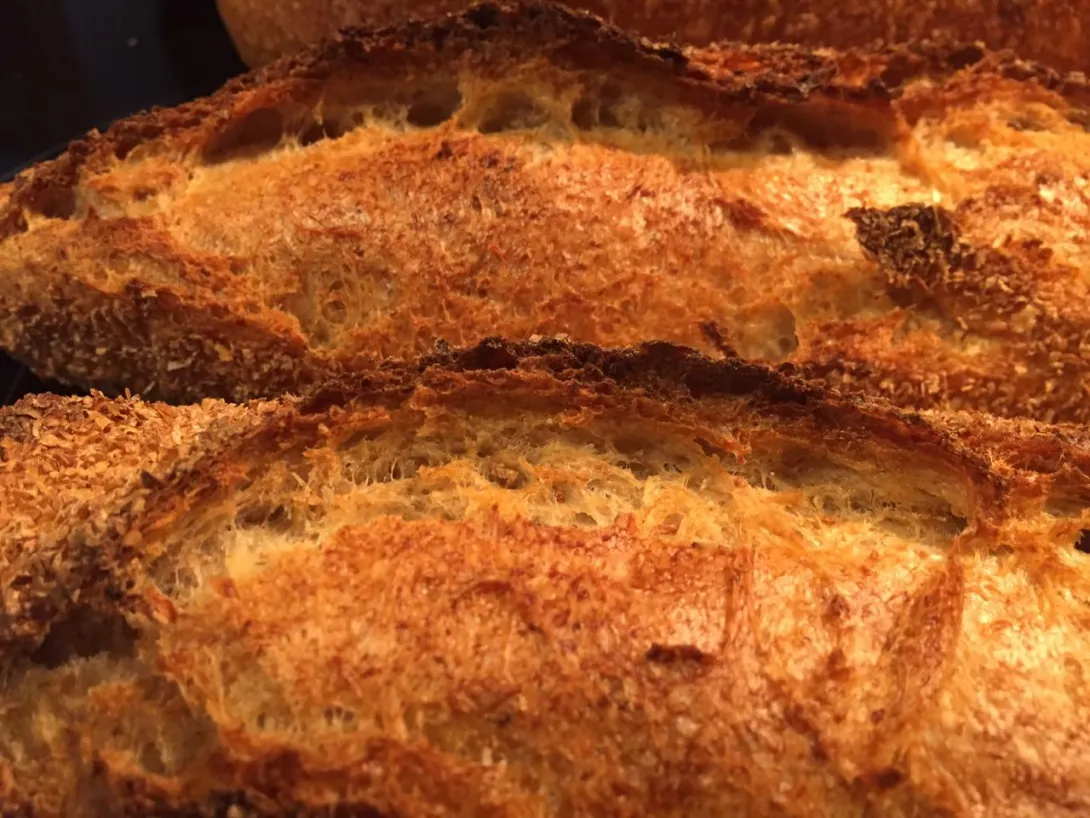
I’d been warehousing another Abelbreadgallery creation since our incredibly able Abel published this on TFL in Jan 2018. And yesterday finally decided to give it a go. At 75% hydration, this is near the upper end of my non-ciabatta type of bread limits. Considering the length of time in retard and the growth of the loaf, both in retard as well as in the oven, I'm surprised at the tight crumb for a 75% hydration dough. Nonetheless, a delicious slice of bread.
Green Olive Levain
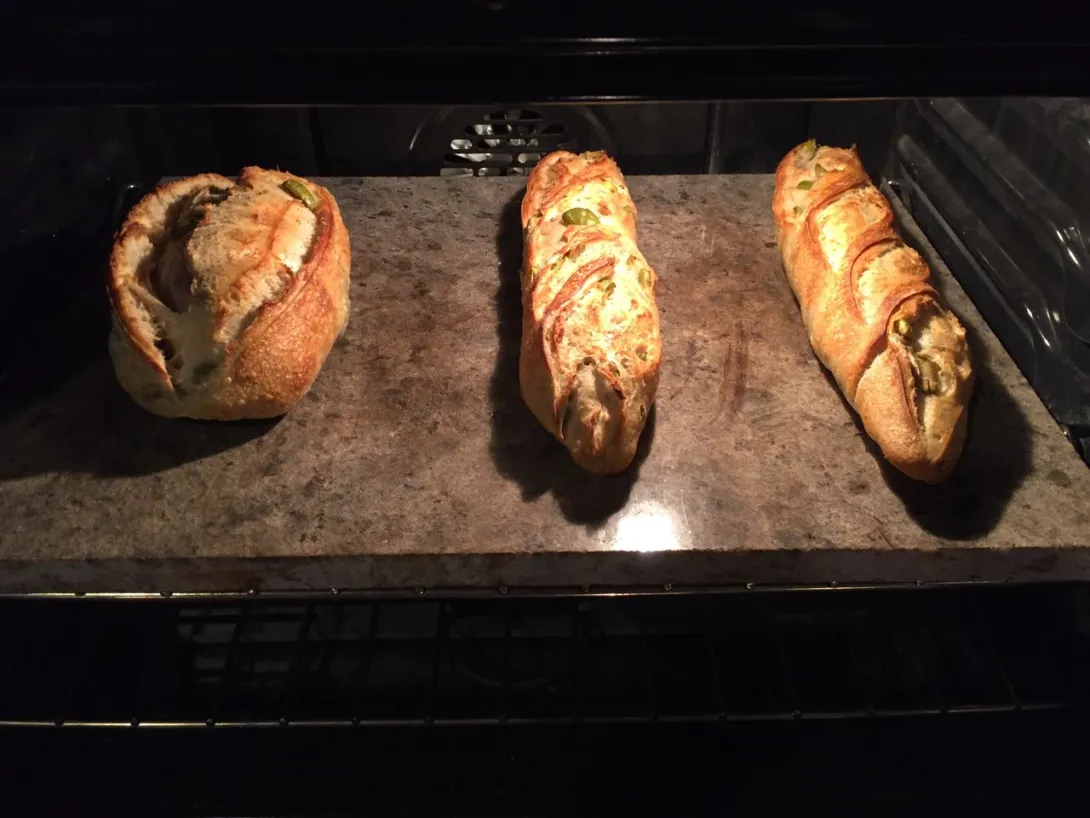
Back once more from roaming the earth and, within way less than a day home, my wife coaxed me into thinking about a next bake. I left it to her imagination what would be next, but she deferred to me.
In the past I'd baked the Hamelman black olive levain a few handful of times, particularly in response to our building's chief engineer's constant "whining" about when I'd bake it again and slip him a loaf.
Pan de Cristal (pa de vidre) alfanso style

I'd been warehousing Abel Sierra's post of pan de cristal for forever. But no more. My first attempt 2 days ago taught me a few things about a few things, and the results, while okay, were tasty but nothing more to write home about nor to write up on TFL. And so I made what turned out to likely be the corrections necessary.
Tritordeum Ciabatta Experiments

Another summer gone, and another summer away from baking. Prior to taking my bake break, I mentioned to my Barcelona friends that upon return, I would also return to complete some unfinished tritordeum business. That being to use the grain in a ciabatta. My recent go-to ciabatta formula is a modified version of Scott MeGee’s biga based dough.
Weekend Bakery Semolina and Sesame Baguettes, alfanso style
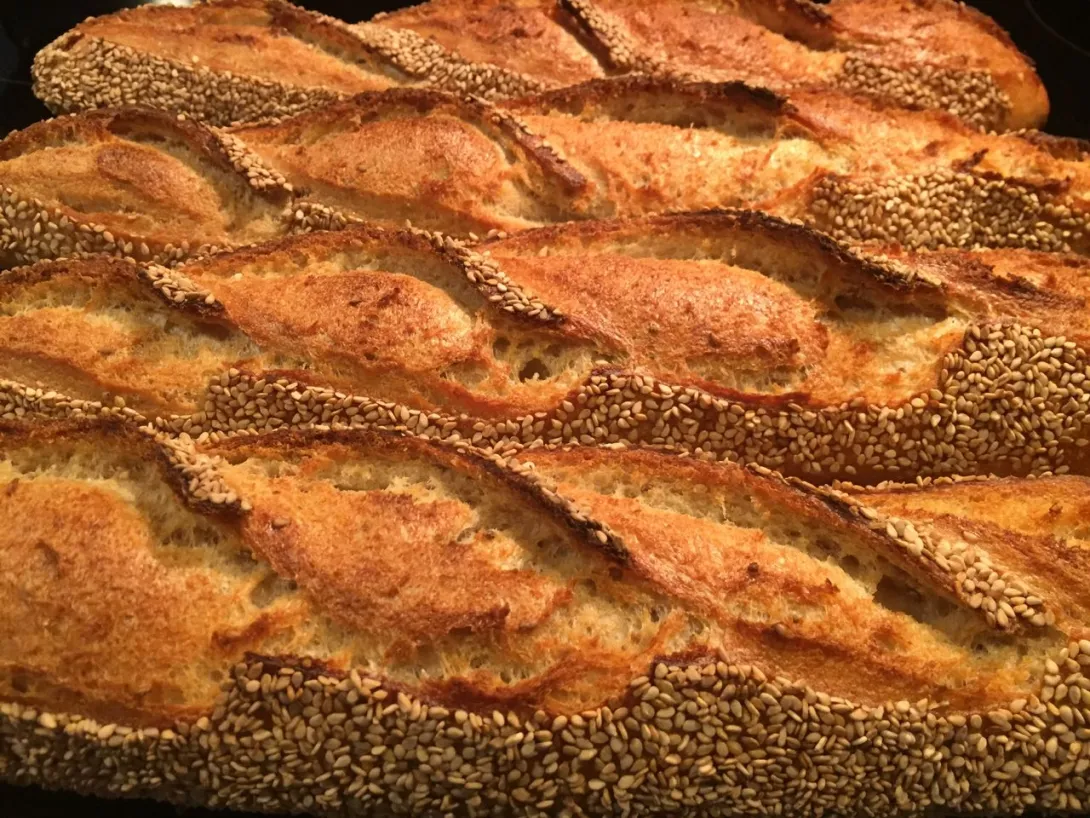
Last week I was trying to enjoy my trip to NY, and I met up with The Roadside Pie King for a couple of slices of pizza (imagine that!). But then Abe sent a link to me from the ace bakers at The Weekend Bakery and encouraged me to give it a go. Upon returning home the other evening, I decided to do just that yesterday and a bake this morning.
